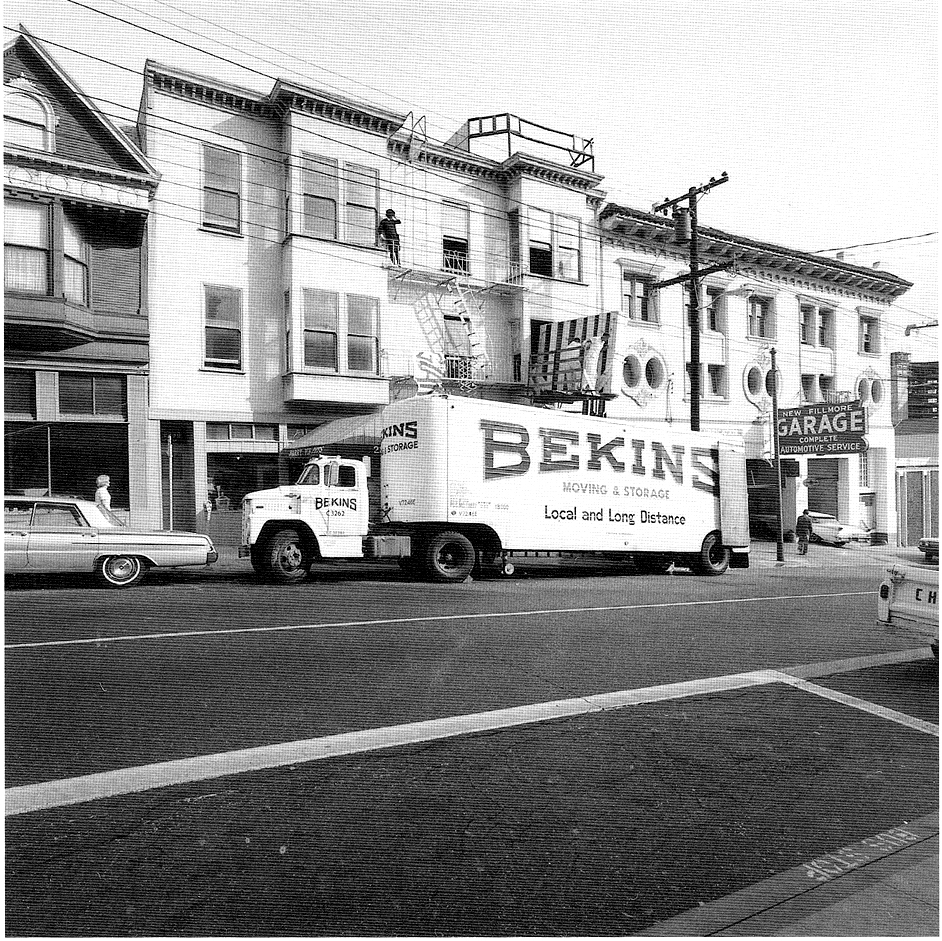
By GARY KAMIYA
San Francisco Chronicle
The most famous event in the history of avant-garde literary San Francisco was Allen Ginsberg’s reading of “Howl” at the Six Gallery at 3119 Fillmore Street on Oct. 7, 1955. That frenzied reading, the subsequent publication by Lawrence Ferlinghetti’s City Lights Books of “Howl and Other Poems,” and the arrests and obscenity trial that followed launched Ginsberg’s career, put City Lights on the map and made the Beat movement nationally famous.
The site of the Six Gallery is one of San Francisco’s literary shrines. But few people realize that an unremarkable-appearing apartment building just eight blocks up the hill at 2322 Fillmore Street was the quasi-communal home of many of the city’s cutting-edge artists and writers from around 1950 to 1965.
The Painterland era came to an end on Nov. 9, 1965, when Jay DeFeo’s “The Rose” was removed by forklift from the building and shipped to the Pasadena Art Museum. One cutting-edge artistic circle faded away, but another one sprang up at almost exactly the same time and place. A few young people were living in an apartment on 2111 Pine Street, just a few blocks away from Painterland. They called themselves the Family Dog.
Read more: “Painterland: the forgotten apartments of San Francisco’s avant-garde“
Filed under: Art & Design, Neighborhood History




